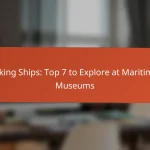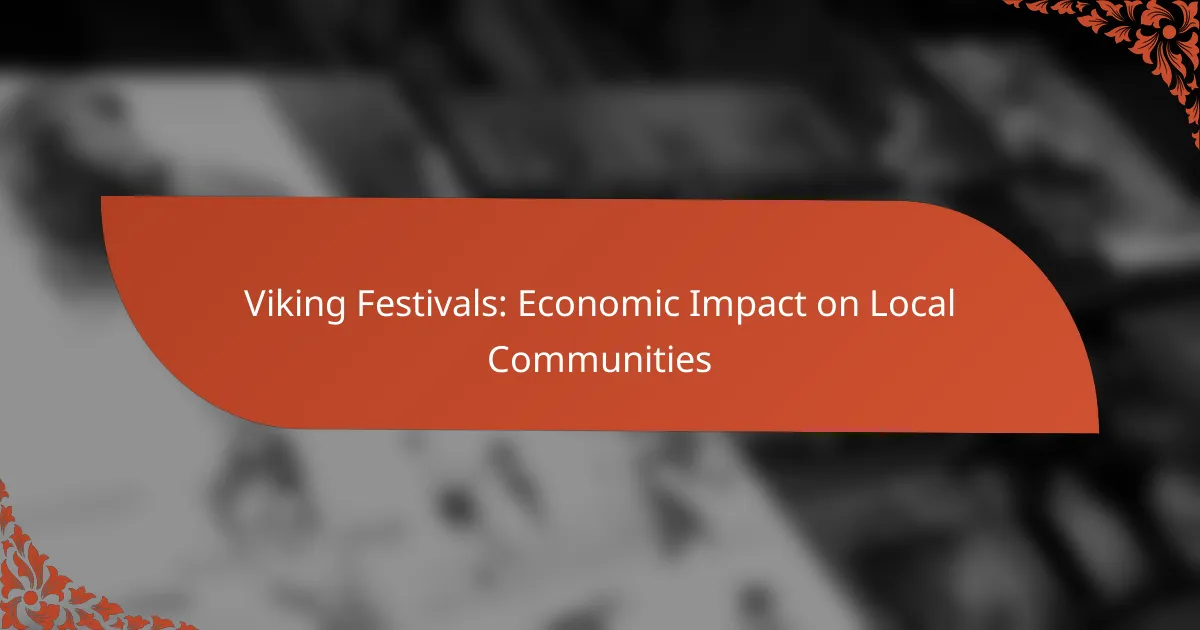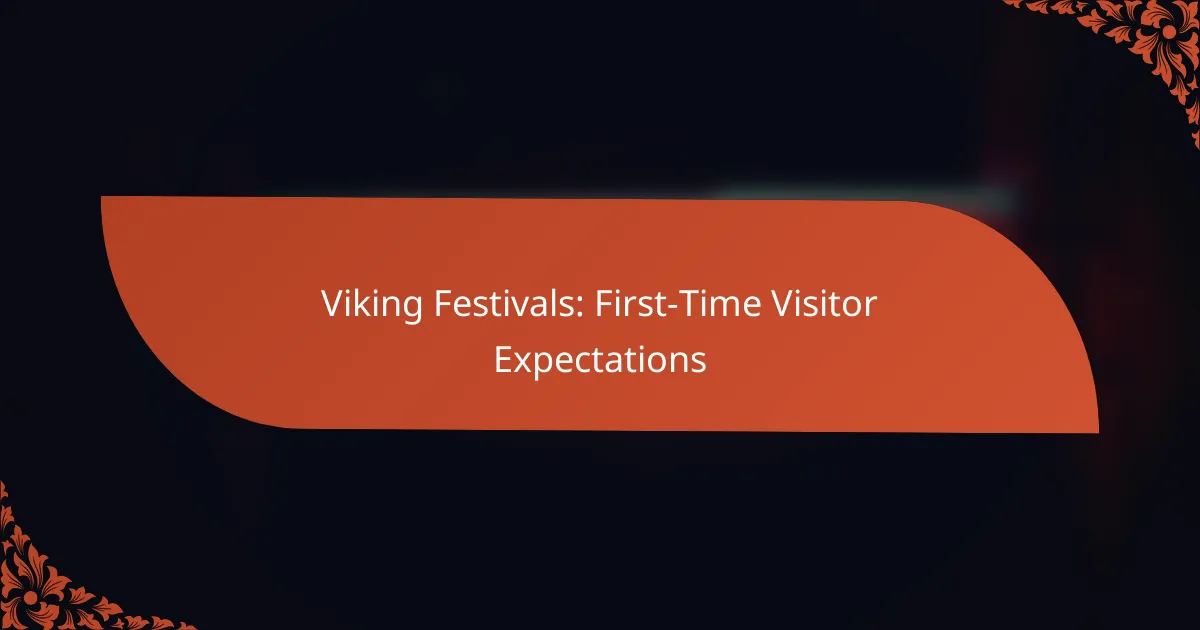Participating in Viking reenactment events in the UK offers a unique opportunity to immerse yourself in the rich culture and history of the Vikings. To fully engage, it’s essential to join local groups, attend training sessions, and prepare authentic clothing, armor, and weapons. By following these steps, you can enhance your experience and contribute to the authenticity of the events.

How to participate in Viking reenactment events in the UK
Participating in Viking reenactment events in the UK involves joining local groups, attending training sessions, and registering for events ahead of time. These steps ensure you are well-prepared and can fully engage in the immersive experience.
Join local reenactment groups
Joining local reenactment groups is a crucial first step for anyone interested in Viking events. These groups often provide resources, guidance, and a community of like-minded individuals who share a passion for history and reenactment.
Look for groups in your area through social media platforms or local history societies. Many groups welcome newcomers and offer introductory sessions to get you started.
Attend workshops and training sessions
Workshops and training sessions are essential for honing your skills in combat, crafts, and historical practices. These sessions often cover various aspects of Viking life, including weapon handling, traditional crafts, and period clothing.
Check local group schedules or community centers for upcoming workshops. Participating in these can enhance your knowledge and confidence, making your reenactment experience more authentic.
Register for events in advance
Registering for Viking reenactment events in advance is important to secure your spot and ensure you receive any necessary materials or information. Many events have limited capacity, and early registration can also provide discounts.
Visit event websites or contact organizers directly for details on registration deadlines and fees. Keep an eye out for early bird rates, which can save you money while ensuring your participation.

What equipment do I need for Viking reenactment?
To participate in Viking reenactment, you’ll need a combination of authentic clothing, armor, weapons, and camping gear. Each of these elements plays a crucial role in ensuring an immersive and accurate experience.
Authentic clothing and armor
Authentic clothing for Viking reenactment typically includes tunics, trousers, and cloaks made from natural fibers like wool or linen. It’s essential to choose colors and styles that reflect the historical period you are portraying.
Armor can vary from simple leather gear to chainmail and helmets. Ensure that any armor you wear is not only historically accurate but also comfortable enough for movement during events.
Weapons and shields
Weapons such as swords, axes, and spears are central to Viking reenactment. Opt for replicas that are crafted to resemble historical designs, ensuring they are safe for use in demonstrations.
Shields are equally important and should be round, made of wood, and painted with designs that represent your persona. A well-crafted shield not only adds to your authenticity but also serves as a practical piece of equipment during combat simulations.
Camping gear for overnight events
If you plan to stay overnight at a reenactment event, bring camping gear that aligns with Viking practices. This includes a tent that resembles historical structures, sleeping bags suitable for outdoor conditions, and cooking equipment that reflects the era.
Consider packing food supplies that can be prepared over a fire, as well as utensils made from wood or metal. Staying true to the Viking lifestyle enhances the overall experience and adds depth to your participation.

What are the best Viking reenactment events in Europe?
The best Viking reenactment events in Europe showcase authentic historical experiences, allowing participants to immerse themselves in Viking culture. Notable events include the Battle of Hastings reenactment, the Viking Festival in York, and the Jorvik Viking Festival, each offering unique activities and insights into Viking life.
Battle of Hastings reenactment
The Battle of Hastings reenactment, held annually in England, commemorates the pivotal 1066 battle between the Norman forces and the Anglo-Saxons. Participants can engage in large-scale battles, witness authentic weaponry, and learn about medieval tactics.
To participate, consider joining a reenactment group that specializes in Norman or Anglo-Saxon history. Ensure you have appropriate attire and equipment, as authenticity is key to the experience. Be prepared for a weekend of intense activity, often involving camping and teamwork.
Viking Festival in York
The Viking Festival in York celebrates the city’s rich Viking heritage with a variety of events, including workshops, storytelling, and craft demonstrations. This festival is family-friendly and attracts visitors interested in learning about Viking traditions and daily life.
To make the most of the festival, plan your visit in advance and check the schedule for specific events that interest you. Engaging in workshops can provide hands-on experience with Viking crafts, while guided tours offer deeper insights into York’s Viking history.
Jorvik Viking Festival
The Jorvik Viking Festival is one of the largest Viking festivals in Europe, taking place in York. It features a week-long program of activities, including reenactments, lectures, and a vibrant market showcasing Viking crafts and food.
For participants, it’s essential to register early, as some events may have limited spaces. Dressing in period-appropriate clothing enhances the experience and allows for better interaction with other attendees. Don’t miss the chance to participate in the grand parade, which is a highlight of the festival.

What skills are essential for Viking reenactors?
Essential skills for Viking reenactors include combat techniques, craftsmanship skills, and historical knowledge. Mastering these areas enhances the authenticity and enjoyment of participation in reenactment events.
Combat techniques
Combat techniques are crucial for Viking reenactors, as they reflect the martial culture of the Norse. Participants should learn basic sword fighting, shield techniques, and the use of axes or spears. Training in these areas can be done through workshops or practice sessions with experienced reenactors.
Safety is paramount during combat demonstrations. Always wear appropriate protective gear and follow established guidelines to prevent injuries. Engaging in sparring with controlled intensity helps develop skills while ensuring a safe environment.
Craftsmanship skills
Craftsmanship skills allow reenactors to create authentic Viking gear and accessories, enhancing the overall experience. Skills in woodworking, leatherworking, and metalworking are particularly valuable. Beginners can start with simple projects, such as crafting a wooden shield or a leather pouch.
Participating in workshops or guilds can provide hands-on experience and guidance from skilled artisans. Learning to use traditional tools and techniques will improve the quality of your creations and deepen your understanding of Viking culture.
Historical knowledge
Historical knowledge is essential for Viking reenactors to accurately portray their characters and understand the context of their actions. Familiarity with Viking history, mythology, and daily life will enrich your reenactment experience. Reading books, attending lectures, and visiting museums can provide valuable insights.
Engaging with fellow reenactors and sharing knowledge can enhance your understanding of the era. Consider joining online forums or local groups to discuss historical topics and exchange resources, ensuring a well-rounded portrayal of Viking life.

How to choose the right Viking reenactment group?
Choosing the right Viking reenactment group involves evaluating their activities, community size, and training opportunities. A good fit will enhance your experience and help you immerse yourself in the culture effectively.
Evaluate group activities and focus
Different reenactment groups may focus on various aspects of Viking life, such as combat, crafts, or historical accuracy. Determine what interests you most and look for groups that align with those activities. For instance, if you enjoy sword fighting, seek out groups that prioritize combat training and historical battle reenactments.
Additionally, consider the frequency and type of events they host. Some groups may participate in numerous public events, while others might focus on private gatherings or workshops. Assessing these factors will help you find a group that matches your enthusiasm and availability.
Consider group size and community
The size of a reenactment group can significantly impact your experience. Smaller groups often foster closer relationships and a more intimate learning environment, while larger groups may offer a wider range of activities and resources. Think about what kind of community you prefer and how it aligns with your social goals.
Engaging with the group’s members before joining can provide insight into their dynamics. Attend an open event or reach out through social media to gauge the atmosphere and see if it feels welcoming and inclusive.
Assess training opportunities
Training is crucial in reenactment, as it enhances your skills and knowledge of Viking culture. Look for groups that offer regular training sessions, workshops, or mentorship programs. These opportunities can help you improve your combat techniques, crafting skills, or historical understanding.
Consider the qualifications of the instructors and the resources available for training. A group with experienced members who are willing to share their knowledge can make a significant difference in your reenactment journey. Don’t hesitate to ask about their training methods and schedules before making a commitment.

What are the costs associated with Viking reenactment?
Costs for Viking reenactment can vary widely based on participation level, location, and personal choices. Participants should consider expenses for equipment, costumes, event fees, and travel when budgeting for these immersive experiences.
Equipment and costume expenses
Equipment and costume expenses are often the largest costs for reenactors. A basic outfit can range from a few hundred to over a thousand USD, depending on the materials and craftsmanship. Authenticity is key, so many choose to invest in handmade items, which can significantly increase costs.
Common items include tunics, trousers, cloaks, and accessories like belts and jewelry. Additionally, weapons such as swords, shields, and axes can add to the expense, with prices varying from around 50 USD for basic replicas to several hundred for high-quality pieces.
To manage costs effectively, consider making some items yourself or purchasing second-hand gear from fellow reenactors. Joining a local reenactment group can also provide access to shared resources and bulk purchasing options, which may reduce individual expenses.









